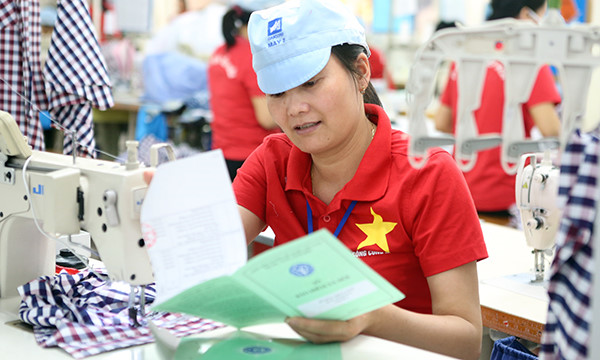Mismatch in quantity and quality: concerns over rising labour demand
 |
| From now till 2030, the private sector will need 730,000 more workers per year (Illustration) |
The Vietnamese economy is witnessing two contrasting trends dictated by the state-owned enterprises (SOE) and the private sector. While the number of SOEs is declining, the number of enterprises in the private sector is increasing. These trends are compatible with the state’ restructuring plan to adapt to enterprises’ practical needs of labour quality.
These statements were made at the seminar “Development Trends of Labour Force in Enterprises in Vietnam,” co-organised by the Institute for Workers and Trade Unions and the Socioeconomic Information and Forecast Review. The seminar took place today, with the participation of numerous scientists, managers, and lecturers from well-known Vietnamese universities.
The upward trend of the number of private sector enterprises requires a compatible increase in the number of qualified workers. According to a report on labour and employment in 2016 of the General Statistics Office, Vietnam is experiencing a golden population period, however, this “golden” only applies to quantity not quality.
In particular, in 2016, 79.1 per cent of the labour force had no specialised knowledge and skills, while only 20.9 per cent was well-trained to meet working requirements. Through these figures,
Dr Nguyen Van Thuat, deputy editor-in-chief of the Socioeconomic Information and Forecast Review, indicated that although Vietnam has an abundant source of labour, quality falls far short of quantity.
It is forecasted that from now till 2030, the demand for workers in the private sector will raise by 730,000 workers per year. Thus, to meet market demand as well to reach the target of having at least one million enterprises in Vietnam by 2020, Associate Professor Dr Cao Van Sam, deputy head of the General Directorate of Vocational Training, drew up some solutions, including raising investment in machinery and equipment used in education, as a measure to follow the trend of Industry 4.0.
Nevertheless, once again, Thuat raised concerns over labour quality and expressed worry whether Vietnamese workers have the ability to utilise new technologies efficiently.
Besides, it is expected that in 2018, the regional minimum wage will be raised by 6.5 per cent. It is hoped that a higher salary will motivate workers to increase labour productivity.
“Enterprises want workers to increase productivity first and salaries later, but workers want the opposite. Thus, to raise labour productivity, it is necessary for enterprises and workers reach a mutual target and understanding. Reaching this target needs cooperation among enterprises, workers, and the government and related agencies,” Thuat said.
What the stars mean:
★ Poor ★ ★ Promising ★★★ Good ★★★★ Very good ★★★★★ Exceptional
Latest News
More News
- Protect what’s next: towards a future free from meningococcal group B disease (December 05, 2025 | 18:00)
- New ILO report offers policy recommendations for disability inclusion (December 04, 2025 | 15:18)
- Maternal job loss may affect children’s mental health, research shows (December 03, 2025 | 19:11)
- Women lead Vietnam’s shift to climate-resilient agriculture (December 03, 2025 | 19:10)
- Experts highlight unpaid care work as key barrier to gender equality (December 03, 2025 | 15:15)
- Opportunities and inequalities for women workers in Vietnam's garment industry (December 03, 2025 | 09:00)
- Vietjet flights carry love to devastated central region (November 28, 2025 | 11:35)
- New initiative to boost the fight against domestic violence (November 26, 2025 | 10:00)
- South Korea funds IOM relief for Vietnam’s typhoon-affected communities (November 24, 2025 | 15:33)
- AI and human-centred values set to shape the future of HR in Vietnam (November 21, 2025 | 18:04)

















 Mobile Version
Mobile Version